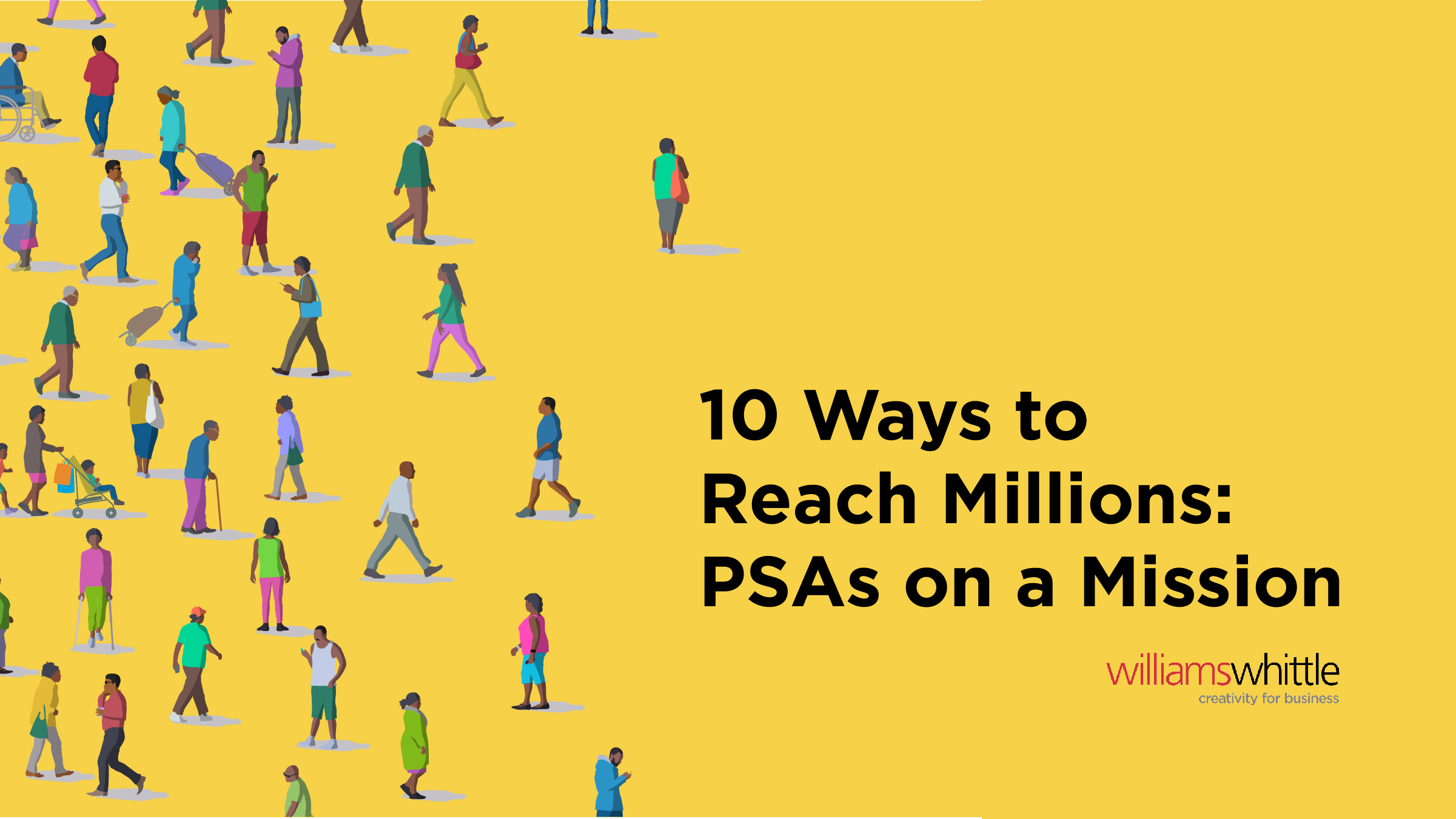by: Julia McDowell
Our ninth annual PSA Director survey launched on April 9, 2020 to 2,390 TV and radio station contacts. The survey was distributed just as COVID-19 ramped up in the U.S. so that we could incorporate questions about COVID-19 related content and PSA space availability.
Not much has changed in stations’ preferences for PSAs – make sure you offer as many spot lengths as possible, distribute in January/February, or the summer – but there has been a shift to “relevance.” In the coronavirus era, stations have heard the call and stepped up to help nonprofits speak to audiences about their needs. And for that reason, their responses in our survey were specific – “make sure your PSA appeals to our demographic/geography,” “promote your PSA when it syncs up to a relevant, timely topic,” and “make sure it is localized.” Read on for the ten key highlights.
And if you’re ready (or thinking about) launching a public service campaign, please reach out. We’d love to brainstorm and walk you through how to make it a reality.
Keep reading the report below or click here to download it.
1. STRATEGICALLY TIME THE RELEASE AND PROMOTION OF YOUR PSA
a. Seasonality for PSA availability is consistent from year to year. The months that PSA managers say they have the most airtime for PSAs are December, November/June, July, September/October, and May. However, this year is an election year. Responses did not reflect election windows.
b. If a PSA has a desired airdate, stations want you to send it between a week and a month before (74%).
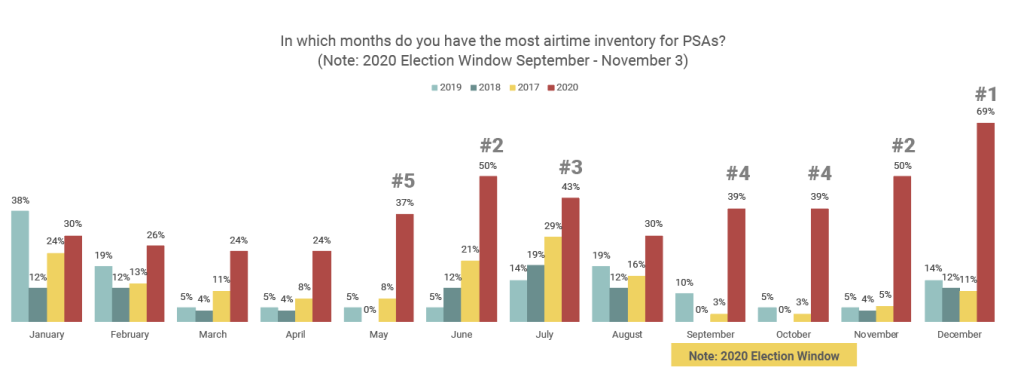
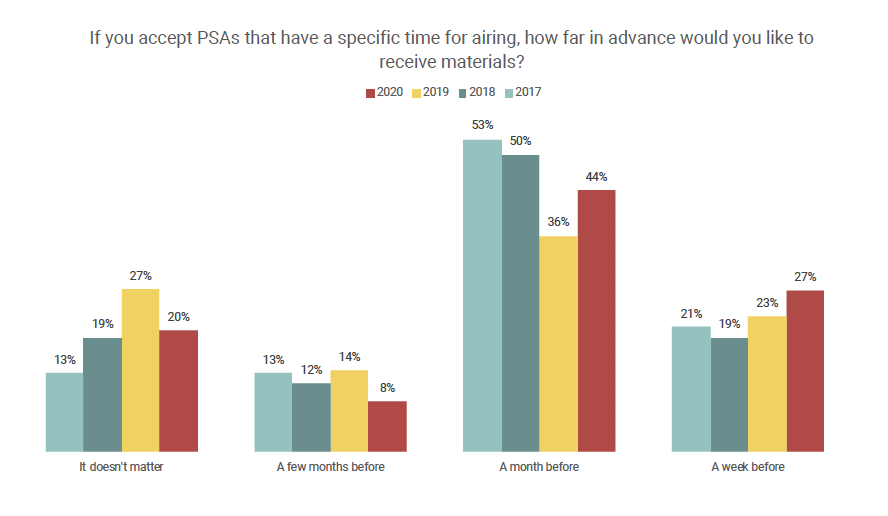
2. STATIONS ARE STEPPING UP THEIR PSA EFFORTS BASED ON COVID-19
When asked about their response to COVID-19 messages, stations are saying they are ready to support.
a. 23% of respondents say that PSA inventory has increased based on COVID-19.
b. 38% of stations have put some PSA messages on hold to focus on COVID-19.
3. EXPECT LESS PSA INVENTORY LEADING UP TO THE 2020 ELECTION
43% of stations expect that they will have less inventory in the months leading up to the 2020 election.
This is about the same type of response we received in 2016 leading up to the election when 45% of PSA directors said they expected to have less inventory. Later when asked if they did end up having less inventory after the election in March 2017, 80% said “yes.” We expect this trend to stay the same in 2020.

4. NO MATTER YOUR MESSAGE, MAKE SURE IT IS RELEVANT TO THE STATIONS YOU’RE SENDING IT TO
“What factors contribute to your decision to air a PSA?”
a. More than 70% of survey respondents say that relevant, timely topics that relate to the news help determine if a PSA makes it on the air.
b. This year, 80% of survey respondents said that the most important factor that contributes to their decision to air a PSA is “if it appeals to our station demographic.” While PSAs are typically evergreen messages that are designed to appeal to “everyone,” in order to get your PSA on air, you’ll need to make the case on why it speaks to that station’s specific audience. Like every great marketer, you’ll need to know your audience.
c. 80% of survey respondents also said they would air a PSA if it is “relevant to my local area such as disaster relief, COVID-19, etc.”
d. Overall, the number one reason a spot makes it on air is that it appeals to a station’s local audience. This is followed closely by the quality of the creative.
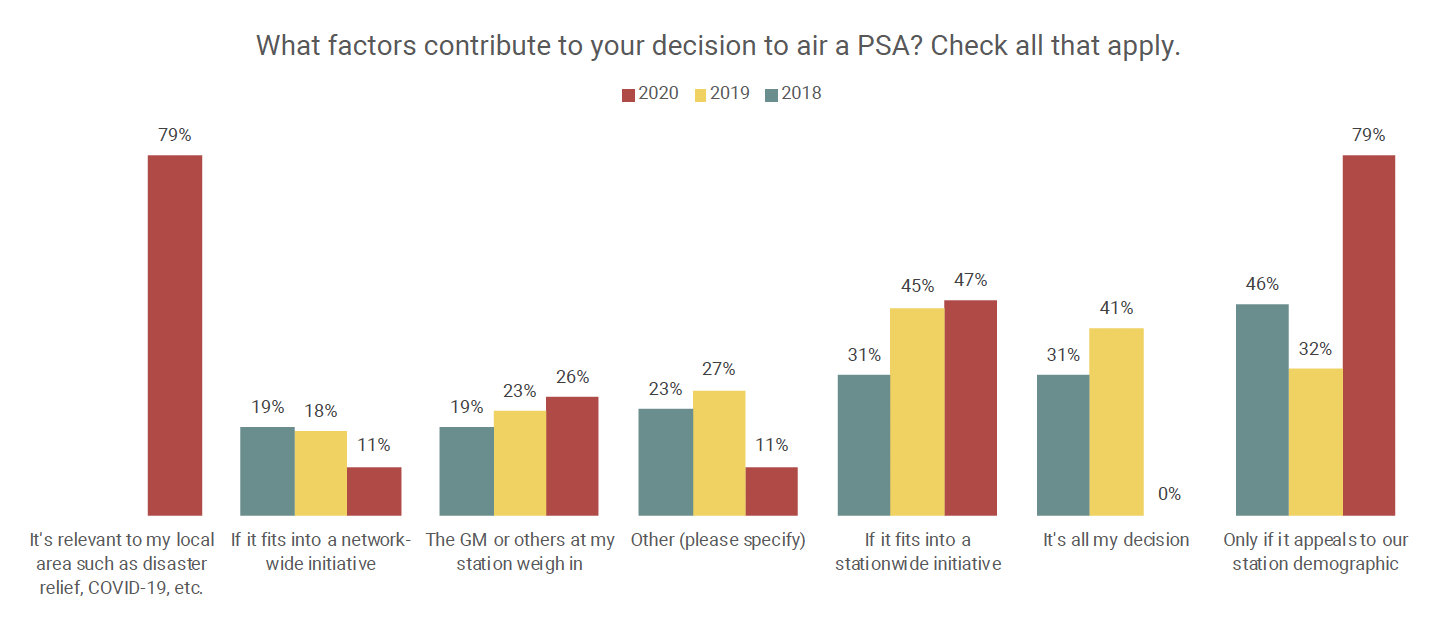
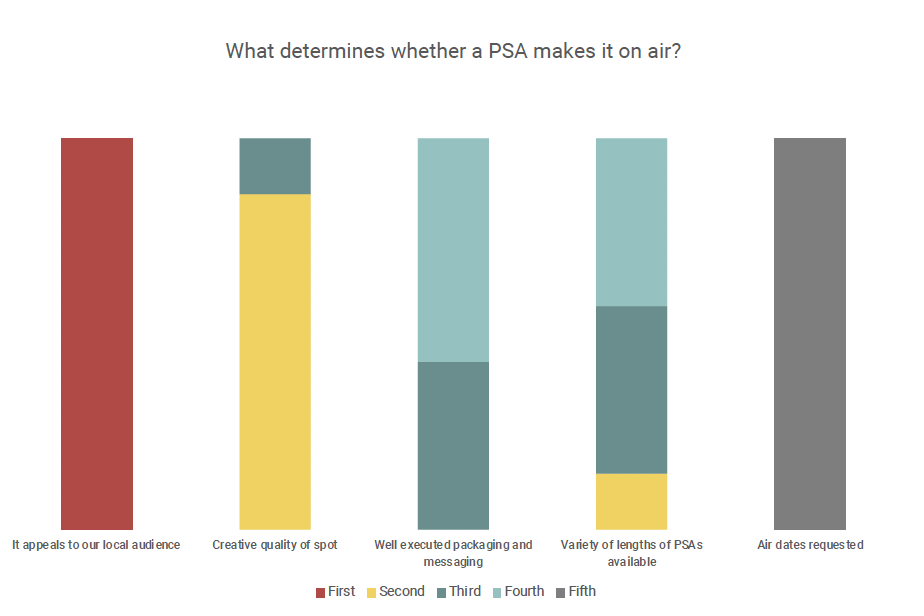
5. STATIONS ARE RECEIVING LESS PSAS AND HAVE SPACE FOR MORE
a. On average, stations receive 14 PSA requests each week. And 50% of stations run anywhere from 1 to 20 PSAs per week.
b. A third of stations will run a spot from 0-3 months, another third will run it from 3-12 months, and almost another third will run a spot indefinitely.
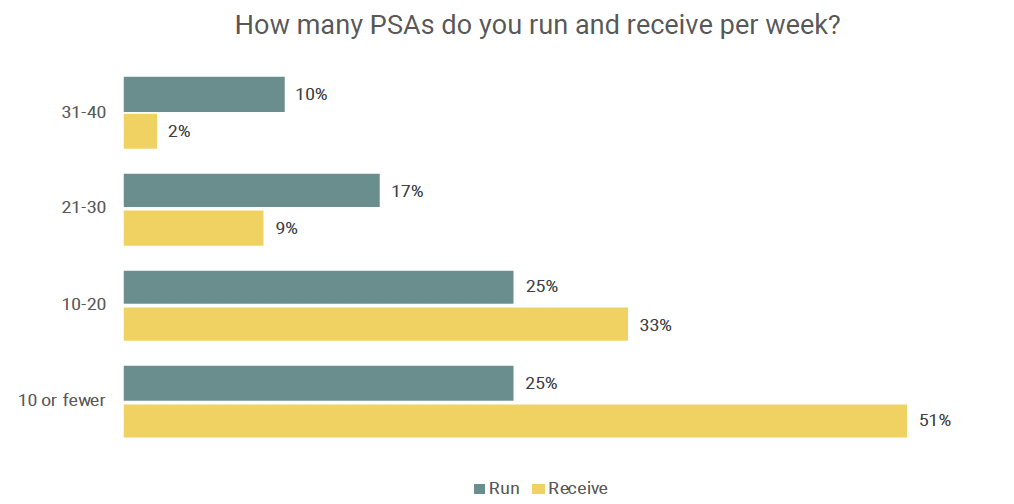
6. EMAIL IS THE PREFERRED WAY OF COMMUNICATION
a. Nearly 100% of our survey respondents said they prefer to hear from nonprofits about their PSAs via email; mail comes in second with almost 10%, and third was phone with 3%. Quick, in-person meetings, which used to be popular, are no longer preferred.
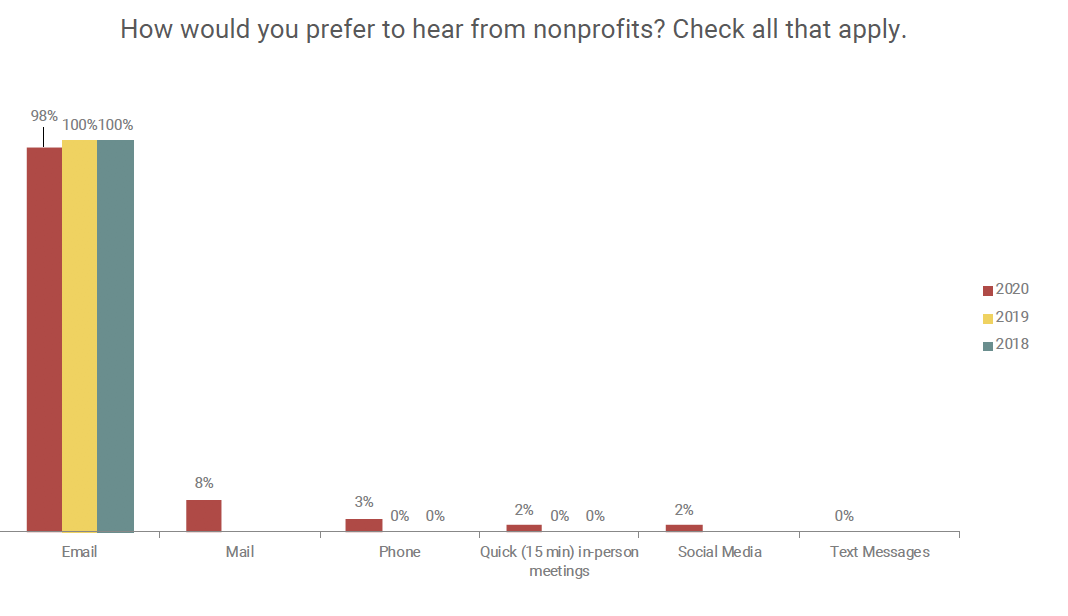
7. PRODUCE A LOT OF OPTIONS FOR STATIONS – INCLUDE DIFFERENT LENGTHS
a. Preference for spot lengths has not changed much from year to year :30s, :60s, and :15s spot lengths are the most popular.
b. More than half (56%) of stations say that they would prefer if the PSA is localized, meaning that your city/town is mentioned or your local chapter is mentioned.
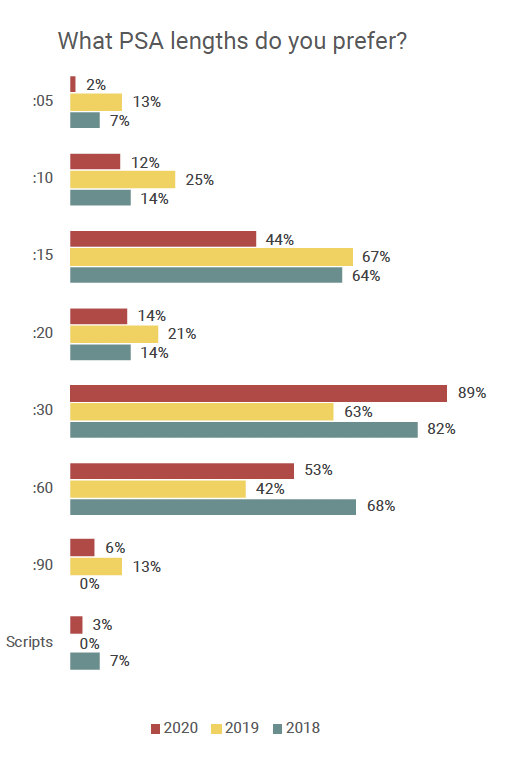
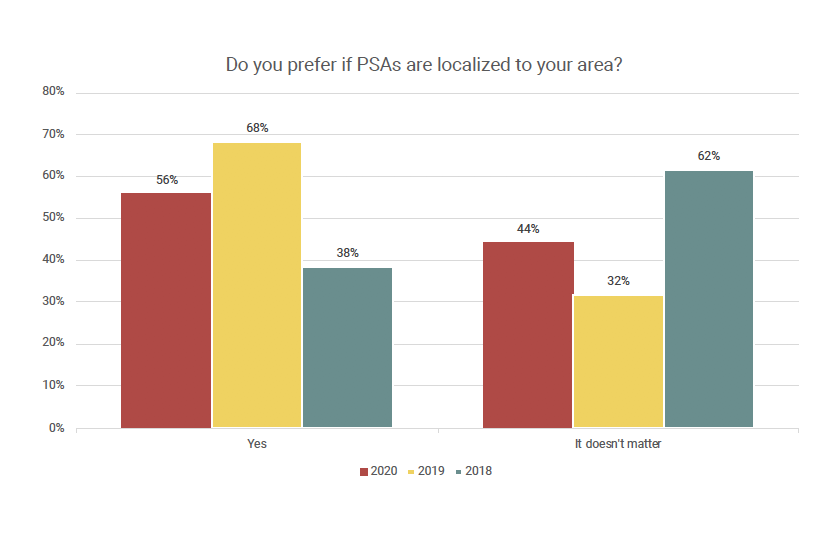
8. STATIONS HAVE NO FAVORITE THEMES, AS LONG AS IT CAN BE TIED TO AN ISSUE IN THEIR COMMUNITY
a. The majority of station media managers have no favorite PSA themes, but for those that identified their passions, children-focused, animals, military, and education were at the top of the list.
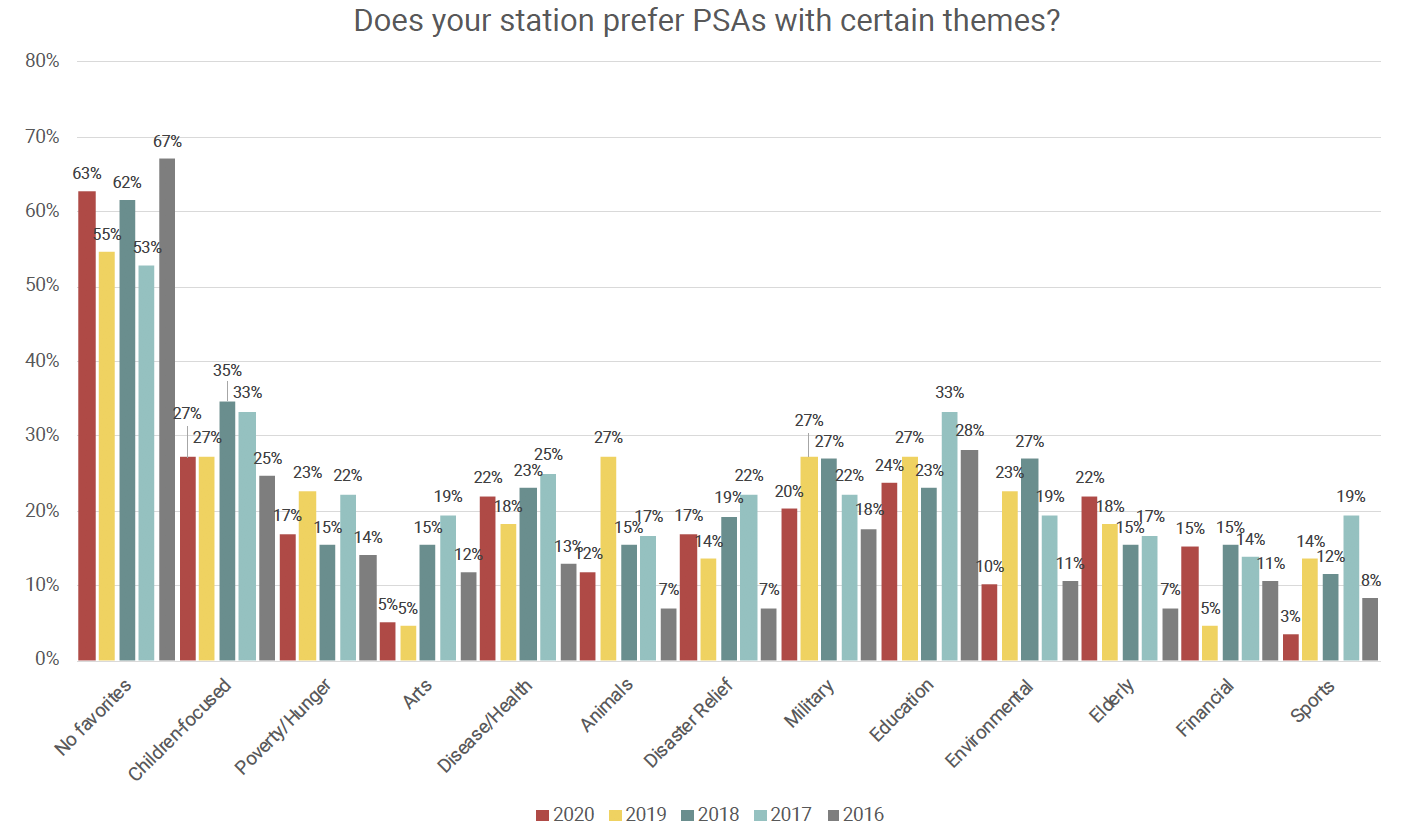
9. PSAS ARE FOR NONPROFITS AND CHARITIES WITHOUT ANY CORPORATE PARTNER OR PARENT COMPANY
a. Stations are very specific that they don’t run PSAs with for-profit company mentions or logos.
b. If you have a budget to pay for some ads, about half of the stations (42%) say it could affect their ability to run it as a PSA. Best to keep your efforts separate!
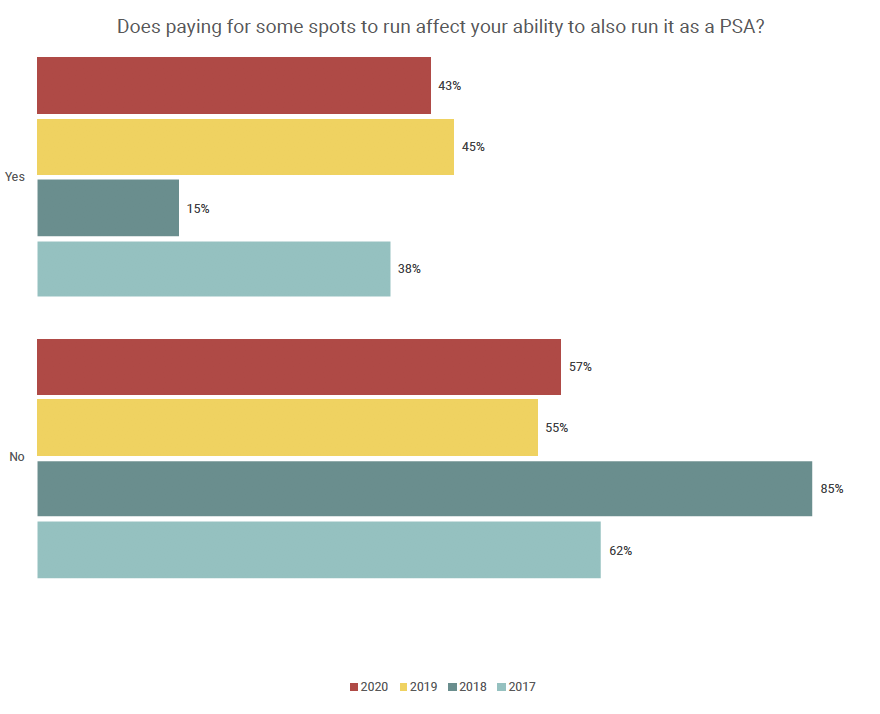
10. KEEP YOUR MESSAGE FRESH
a. The desire for fresh creative has increased in 2020, with nearly 70% of respondents saying they’d like new PSA material every month to three months.
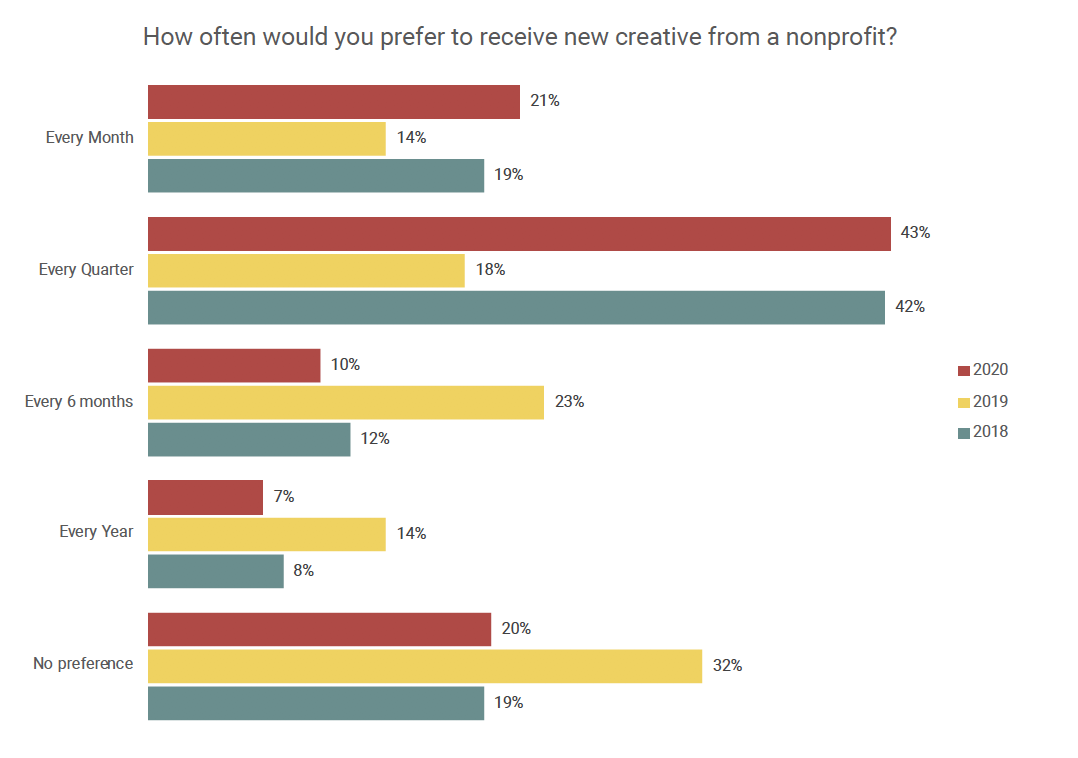
Thank you for reading.
About Williams Whittle
Williams Whittle has thrived for 50 years as a full-service advertising agency, working with nonprofit and forward-thinking companies dedicated to making a positive impact.
We don’t just talk about successful PSA campaigns…we execute! Over the past ten years, every one of our PSA campaigns has ranked in the top five percent of all campaigns nationally. That’s millions of dollars of measured value for each of our clients, enabling them to reach new potential advocates for their causes.
Contact us today to learn more.
Julia McDowell is a PSA Specialist with nearly 15 years launching successful PSA campaigns nationwide.
